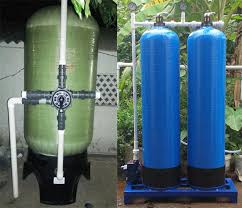Sand filters are an essential component of maintaining clean and clear water for a variety of applications, from swimming pools to industrial processes. Their simplicity and efficiency make them a popular option for water filtration but understanding how they work and the benefits they provide can assist to make the most of this crucial instrument.
How Sand Filters Work
At the core of a sand filter (فیلتر شنی) is its filtering medium, sand. The filter consists of a container filled with a layer of sand that water flows through. When water flows through the sand bed contaminants like dirt, debris and other particles get kept within the sand. Sand layer efficiently removes contaminants through physical as well as biological processes.
Types of Sand Filters
There are a variety of Sand filters, each one suited to different applications:
Sand Filters for Pools Sand Filters: These are designed to keep swimming pool water clean. They employ a layer of specially graded sand that is designed to trap debris and particles. The filters in the pool are famous for their minimal maintenance and their high efficiency.
Pressure Sand Filters: Often used in industrial contexts, these filters function under pressure, allowing for increased flow rates and filtration effectiveness. They are ideal for large-scale treatment of water.
Slow Sand Filters: Common in municipal water treatment facilities, slow sand filters employ an enlarger filtration rate in order to allow for biological processes to assist in removing the contaminants. They are highly effective but require regular maintenance and cleaning.
Rapid Sand Filters: These filters have a greater flow rate and come with backwashing capabilities that help remove trapped debris. They are commonly used at large scale water treatment establishments.
Benefits of Sand Filters
Cost-Effective: Sand filters are generally less expensive than other methods of filtration and are low in operational cost. Their simplicity also means fewer mechanical components that break down.
Low Maintenance: Regular maintenance typically involves backwashing in order to eliminate the accumulation of debris. This is simple and doesn’t require any special tools.
Durability Sand filters are designed to last and can handle the weight of water without significant wear and tear. This makes them a safe option for residential and commercial applications.
Highly Effective Filtration can provide effective filtration for a range of particle sizes, ensuring the water is clean and clear.
Maintenance Tips
To ensure that a sand filter functioning optimally, it’s essential to periodically wash the filter back to get rid of trapped particles and prevent clogging. Additionally, checking and replenishing the sand periodically is necessary to ensure that the filter is functioning properly.
In summary, sand filters are an effective, practical and economical solution to water filtration. Understanding the different types and their unique uses can help you select the right sand filter for your needs and ensure that it will function efficiently for many long time to come.



